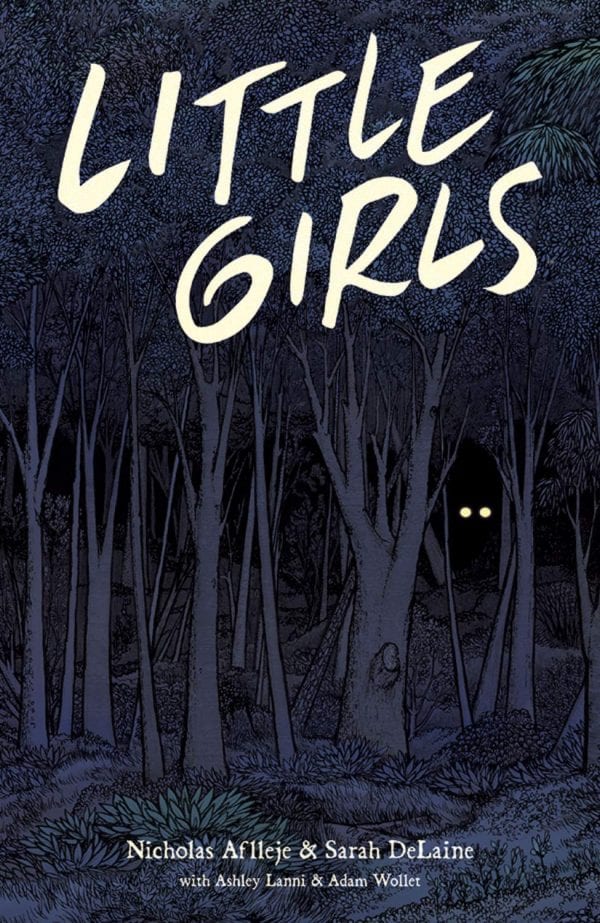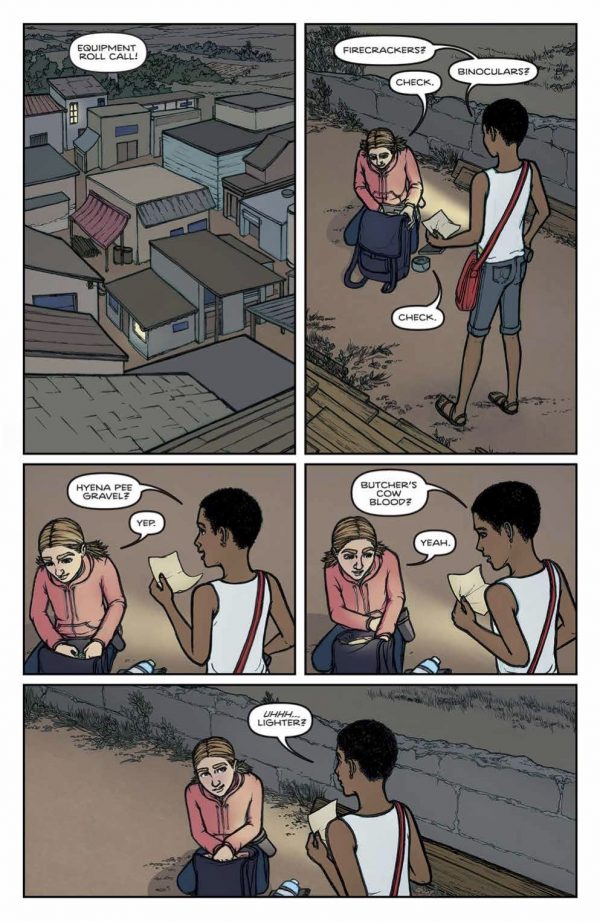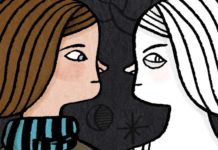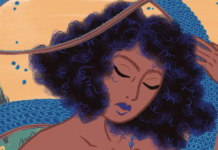Little Girls
Written by Nicholas Aflleje
Illustrated by Sarah DeLaine
Colored by Ashley Lanni
Lettered by Adam Wollett
Image Comics
This is not a statement wrought from vigorous scientific analysis, but it seems like there are a lot of creatures wandering around the world mutilating cattle. Other than the UFOs, of course. Most famous of all is probably the Chupacabra, which is a more recent entry into the cryptozoological folklore and is mostly known for its bloody work south of the border, but I guess, as with all good legends, it has traveled on occasion up into the United States.
Of these beasts, there are those that prefer human flesh — the Beast of Gévaudan, the Malawi Terror Beast, and tons of others that never seemed to have been honored with an awesome name to commemorate the horror and bloodshed they caused.
Among this melange of monsters sits the Kerit, a Kenyan creature also known as the Nandi Bear, and has a few other names on top of that, though some claim it’s not a bear but a hyena, possibly even a giant hyena from the ice age. Regardless, reports of the Kerit have been made by the Nandi people in Kenya for nearly 
In the realm of comics history, the Nandi Bear doesn’t seem to have much of one, though it did battle the so-called Lord of the Jungle in Tarzan #134, a 1963 comic from Gold Key.
It’s in Little Girls that the Nandi Bear makes its glorious return to the comics pages, in which we are taken to Harrar, Ethiopia, a walled city that has become well-known for the tradition of feeding hyenas that has become a tourist attraction. That particular activity is featured in Little Girls, as seen through the eyes of Sam, who lives with her dad and is new to the city.
She befriends Lielet after a run-in with some bullies, and bond over the mystery of local cattle mutilations, with Lielet as the tour guide into the night, beyond the city’s walls where they encounter a mysterious pit and a creepy voice, and then the deaths escalate to human ones.
What Sam and Lielet blunder into isn’t some grand, high octane battle against a magical evil, but rather a mysterious entry point into folklore that DeLaine’s art drives home. Grounded in the real world, and featuring a monster that looks like something that would exist in it, DeLaine renders Harrar and the landscape around it soberly, clearly, putting the story into terms that makes sense in the world we inhabit, rather than some fantasy. It acknowledges the idea that folkloric tales are fantastic tales, but are meant to intersect with the daily lives of those who are told them, to add wonder and understanding within normal terms.
For Sam and Lielet, this means becoming aware of what the Kerit is up to and becoming familiar with the motivations of a creature that would manipulate hyenas and face the fury of lions under the cover of darkness, while also challenging the human population to fear something they can’t see.
Little Girls is probably best enjoyed by the middle-grade reader demographic since its themes are sophisticated as it takes two displaced young people and finds them grounding in a folkloric netherworld that gives them some meaning, but never over-complicates the experience. It keeps it simple, thankfully, and while the Kerit is the obvious draw, giving it a supernatural edge, the center of the story is Sam trying to find a place she belongs and Lielet trying to find a person who understands her. They connect through the fantastic and find meaning in the walking myths they encounter, but their friendship and their feelings about the world around them are grounded in reality. Brain-eating cryptids are just the icing on the cake.










